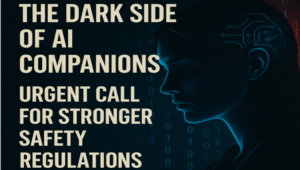Text-to-video artificial intelligence models have improved over the past two years, going from noisy output to hyper-realistic outcomes.
Businesses advanced and began developing text-to-video models not long after DALL-E gave rise to text-to-image AI. With text suggestions, the landscape has changed over the past two years from being noisy to providing incredibly accurate outcomes.
Several models available now show a high degree of controllability and the ability to generate film in a variety of artistic styles, however, the results may still be far from ideal.
Try out these six most recent text-to-video artificial intelligence algorithms.
OpenAI, the company behind Sora ChatGPT, recently unveiled Sora, a new text-to-video paradigm. With the model’s “deep understanding of language” and ability to create “compelling characters that express vibrant emotions,” everyone is thrilled. Social media users are raving about how lifelike the films appear and describing them as a complete game-changer.
However, the AI business is taking precautions to ensure safety before making it available to the general public. They also acknowledge that Sora has certain glitches, such as difficulty maintaining order and discerning between left and right.
Space-Time-U-Net, also abbreviated as STUNet, is a novel diffusion model that powers Google’s Lumiere artificial intelligence system for creating videos. Lumiere, according to Ars Technica, doesn’t fumble with piecing together still frames; instead, it determines the location of objects in a video (the space portion) and monitors their motion and changes simultaneously (the time portion).
There is no need for puzzle pieces—it’s like one seamless operation.
Lumiere is still not ready for the general public to use for recreation. However, it suggests that Google has a talent for creating a powerful AI video system that could surpass commercial models like Runway and Pika. In just two years, Google has advanced artificial intelligence in video games.
VideoPoet is a large language model that has been trained on an enormous amount of text, audio, image, and video data. This model can do a wide range of video creation activities, such as video-to-audio conversion, adding style, and inpainting and outpainting films, in addition to converting text or images into videos.
The model’s basic concept is to turn any autoregressive language model into a system that can produce videos. With ease, autoregressive language models can generate text and code. But when it comes to video, they run into trouble.
VideoPoet uses a variety of tokenizers to convert audio, image, and video footage into a language it can comprehend to address that.
The AI model used by Emu Video Meta takes two steps. It creates a picture from the text first. It then uses that picture and text to produce an excellent video. By optimizing noise schedules for diffusion and multi-stage training, the researchers were able to achieve this.
According to human evaluators, it was 81% better than Google’s Imagen Video, 90% better than NVIDIA’s PYOCO, and 96% better than Meta’s own Make-A-Video. Furthermore, it outperforms even for-profit solutions like Pika Labs and RunwayML’s Gen2.
Interestingly, their factorization method outperforms previous research by 96% when it comes to animating graphics based on user input requests.
The Phenaki Video team used Mask GIT to create PyTorch-based text-guided films. Up to two minutes of text-guided films can be produced by the model.
The research proposed a modification: adding an additional critic to determine what to mask during iterative sampling, rather than relying solely on the anticipated probabilities. This aids in deciding which aspects of the video-making process to concentrate on. It is similar to getting a second opinion.
Researchers may train the model on both text-to-image and text-to-video scenarios due to its versatility. They may be trained unconditionally using photos as a starting point and then refined on video.
- CogVideo

A team of researchers from Beijing’s University of Tsinghua created CogVideo, a large-scale pre-trained generative model for text-to-video. To take advantage of the pre-trained text-to-image model’s expertise, the model was constructed using CogView2.
Glenn Marshall, a computer artist, gave it a shot lately. At first, he was so impressed that he warned directors that this could cost them their jobs. His CogVideo short film, “The Crow,” did well and even received a nomination for a BAFTA.





















